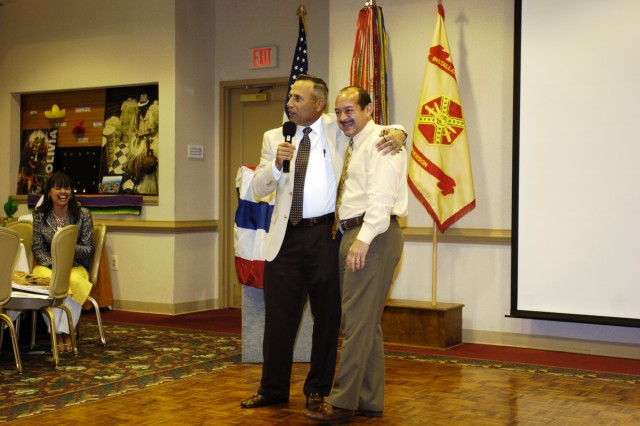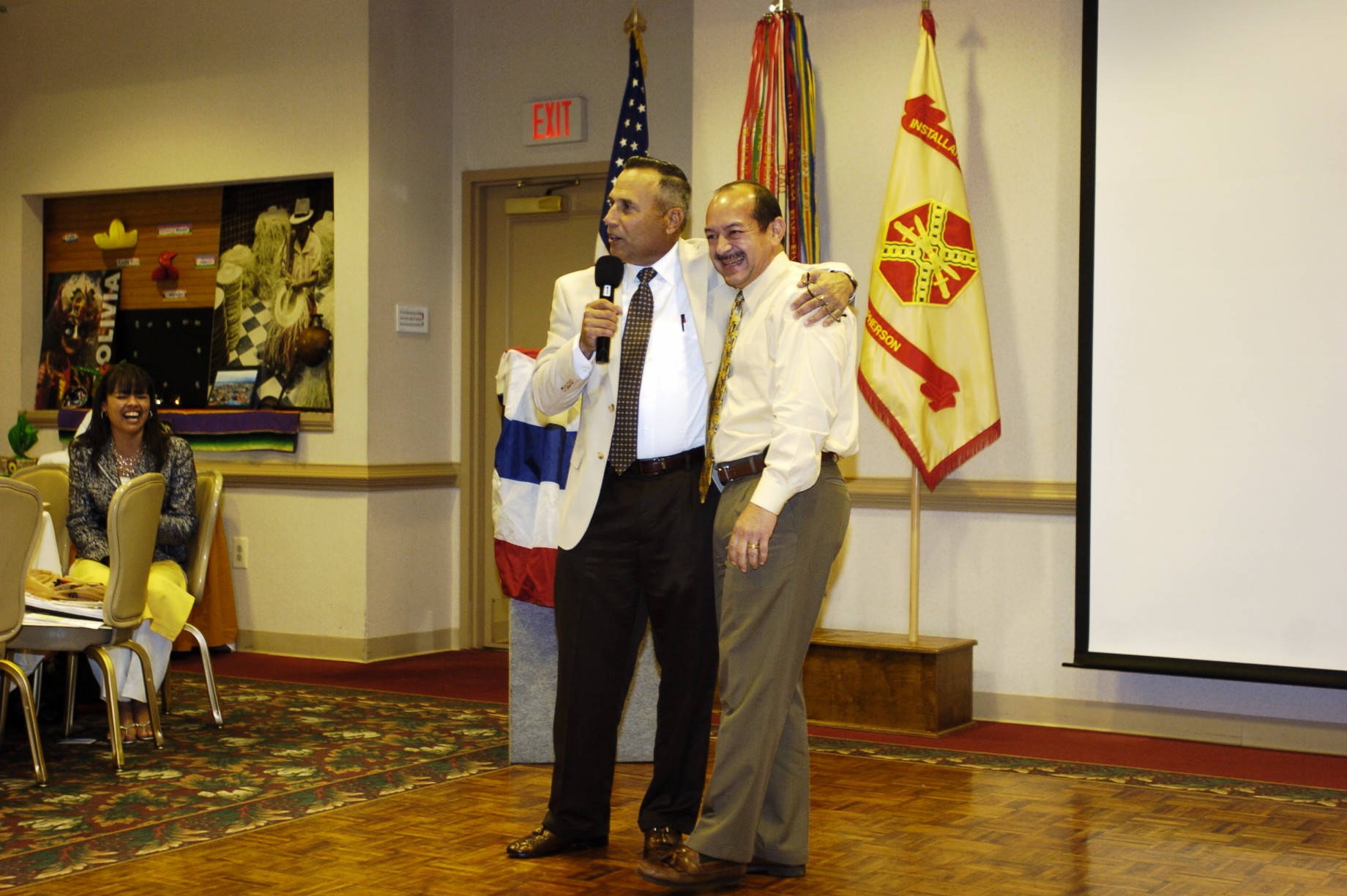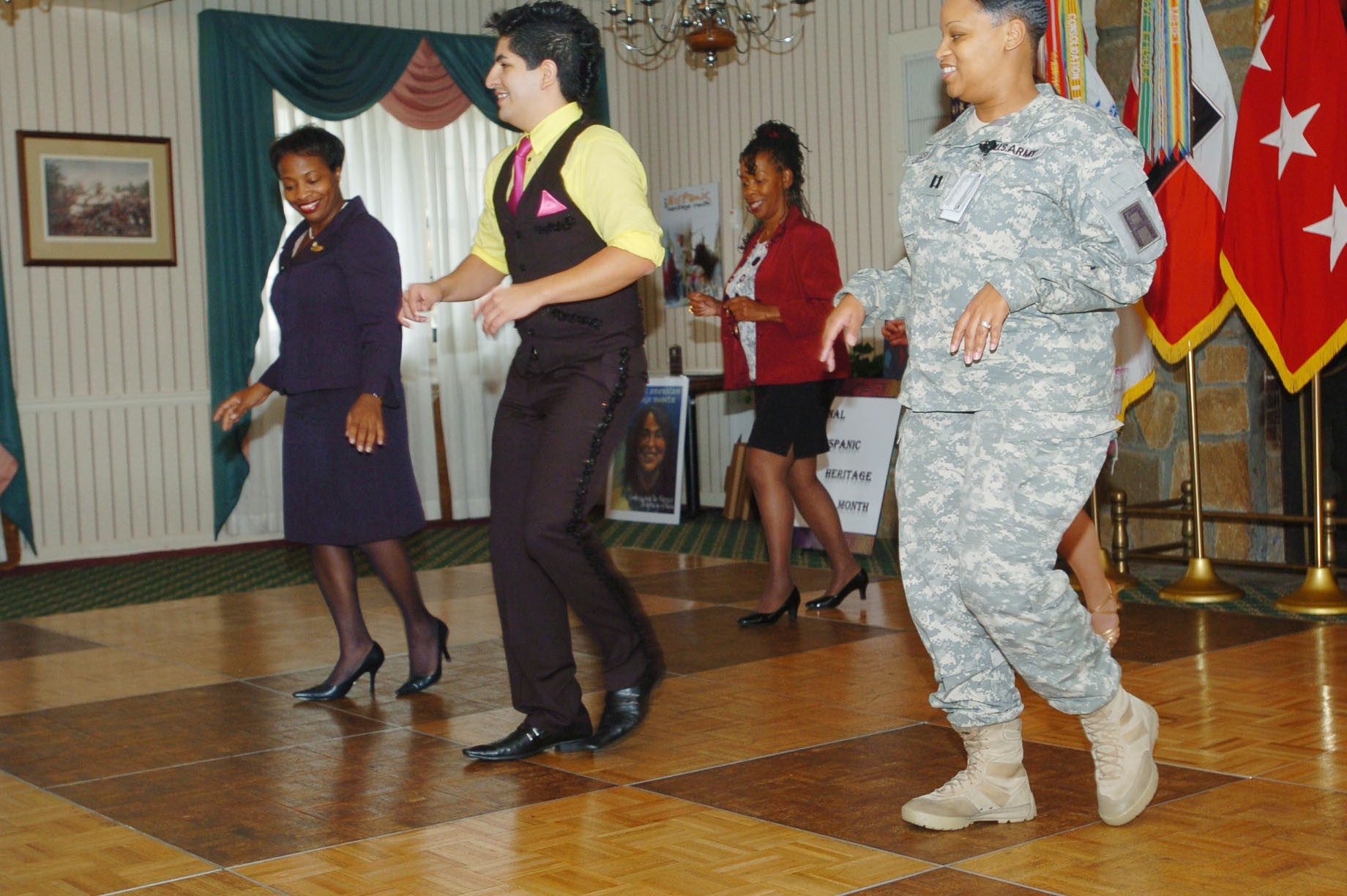"America's greatest asset is its people and the diversity of its people. Our nation is a mosaic of the world's many cultures and we must take the time to honor and respect the rich heritage and outstanding contributions that help make this country great."
Fort McPherson and Fort Gillem fulfilled these words by Sgt. 1st Class Victor Ortizroche, noncommissioned officer in charge of the U.S. Army Garrison Chaplain Office, by holding a Hispanic Heritage Month celebration at The Commons at Fort McPherson Sept. 30.
Hispanic Heritage Month is observed from Sept. 15 through Oct. 15. It began in 1968 as Hispanic Heritage week under President Lyndon Johnson and was later expanded to a full month by President Ronald Reagan with respect to the anniversary of the independence of five Latin American countries on Sept. 15, 1821: Costa Rica, El Salvador, Guatemala, Honduras and Nicaragua.
During the observation at The Commons, participants were able to gain a taste of Hispanic culture through authentic food and a salsa dance demonstration from professional salsa dancers Sheila Sampath and Andres Nunez.
"It is important to do as much as you can to promote the culture," said Sampath, who owns Sheila's Salsa in Atlanta.
Although not Hispanic (Sampath is of Indian descent), she said she fell in love with the culture, especially the music, when she was introduced to it 12 years ago.
"The music is rich and deep," she said. "What I receive is a culture rich in family and spirituality that has had really good times and times of real struggles."
The fact that a non-Hispanic can embrace another culture is a path that more people need to follow, said Maj. Ellen Diaz, G4 logistics officer for U.S. Army Forces Command.
"It doesn't matter where you come from. You can share cultures," said Diaz, who is of Puerto Rican descent. "As a community, we need to do more to educate ourselves about different cultures."
Carol Eubanks, narrator and USAG Public Affairs Office public affairs specialist, spoke of notable Hispanic Americans in the Army's history, including Master Sgt. Roy Benavidez, Medal of Honor winner in Vietnam and Gen. Richard Cavazos, the first Hispanic four-star general and former commanding general of FORSCOM (1982 to 1984).
Ortizroche spoke of Hispanic Americans currently serving.
"As we speak, 125,000 men and women of Hispanic heritage are serving in more than 120 countries around the world. They now represent almost 10 percent of our military, the largest number in U.S. history," he said.
To further illustrate the contributions to the armed forces made by Hispanic Americans, who have served in every major American conflict and earned more than three dozen Medals of Honor, Ortizroche mentioned a place that has done more than its share to contribute.
"There's a street just west of Chicago that many Hispanic Americans have called home for decades. It is a humble area, just shy of two blocks long. But that street has contributed dozens of people to military service - possibly more than any other street of comparable size anywhere in the country - 84 men from 26 families, who served in World War II, Korea and Vietnam. This street is now known as Hero Street USA."
Although not Hispanic, the event guest speaker, retired Command Sgt. Maj. Nick Piacentini, had much to add to the event.
"If you're wondering how an Italian American can be a guest speaker, you're not alone," he joked.
But his following words were more serious, especially when speaking of how his mother shaped him to respect all cultures and people.
"I remember Mom took me aside and told me, 'You're going to be with a lot of kids not like you, so you treat them all with dignity and respect. You don't prejudge.'"
Those words stayed with and helped him in his nearly 39 years in the Army, said Piacentini.
Getting to know, showing concern for and reaching out to others may have lead others to reach back to him, he added.
Piacentini said it is still important to live an inclusive lifestyle.
"All it takes is just the opportunity to get to know people a little better and you'll be surprised of what you can learn," he said. "Before you prejudge someone, take the time to just say good morning."
The celebration did much to highlight the Hispanic American contributions to America, said Sgt. 1st Class Mark Steinfeld, equal opportunity advisor, USAG Equal Opportunity Office.
"We paid respect to those of Hispanic descent. The audience was captivated, entertained and educated on the nuances of Hispanic Heritage," he said. "It is a rich and beautiful culture, impossible to summarize in just one day or even one whole month."
Those who were unable to attend due to operational constraints missed out on one of the better Fort McPherson and Fort Gillem Garrison ethnic events of 2009."






Social Sharing